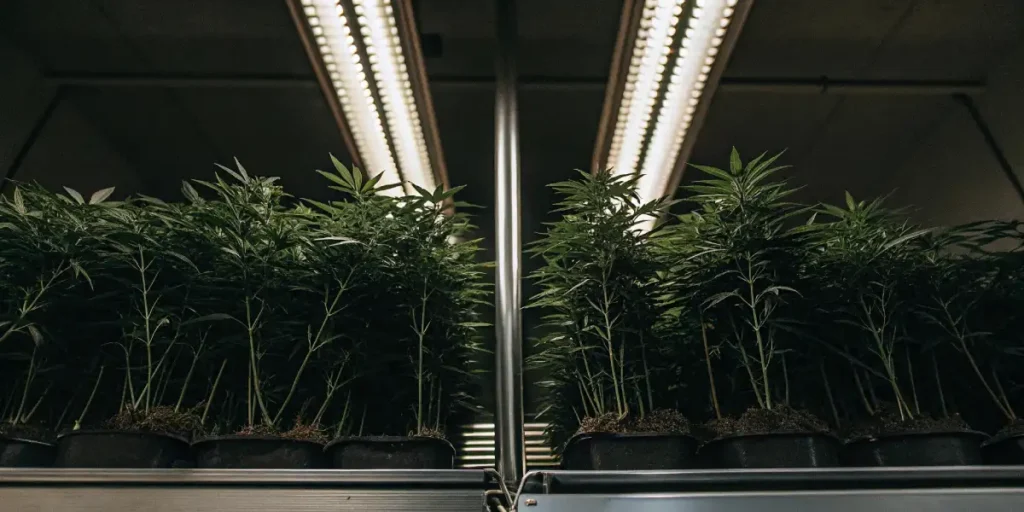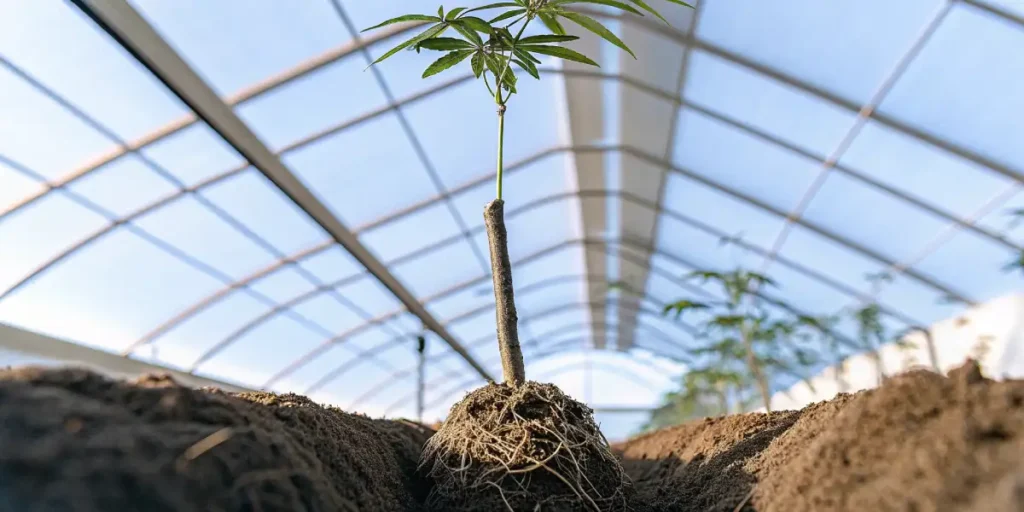
Roots 101: Let’s Clear Up the Confusion
Alright, let’s have a real talk about roots. I’ve seen a lot of articles that mix up two completely different things, and it drives me crazy because it can mess up your Grow. So, we’re going to set the record straight right now.
When we talk about roots in cannabis cultivation, we’re playing two different games:
Recommended Strains
Powering Up Your Plant’s Engine.
This is all about making the main root ball, the one already in the soil, bigger, stronger, and more efficient. More roots down below means a bigger, more powerful plant up top.
Promos & Deals
The Magic of Creating New Roots.
This is about generating roots from a place that isn’t another root, usually from a stem. We call these “adventitious roots,” and this is the magic behind cloning and making entirely new plants.
See the difference? One is about enhancing what you have, the other is about creating something new. Let’s break down how you can master BOTH games.

Supercharging Your Main Root System
Think of your plant’s root ball as its engine. A bigger, healthier engine means a bigger, healthier plant that can absorb more nutrients and Thrive. So how do you encourage it to expand?
First, you give it a nice home. One of the best things you can do is add a layer of quality organic mulch on top of your soil. This isn’t just for looks. That mulch protects the sensitive top layer of roots from drying out and encourages them to spread out wide, creating a massive network of secondary roots just below the surface. It’s a simple way to Nurture your plant’s foundation.
And this brings me to the golden rule, and I can’t say this enough: Roots HATE direct light. They are designed to live in the dark, under the earth. If you have roots exposed to light for even a short time, they will get scorched and die. Period. Protect them. That mulch helps, and using non-transparent pots is a must.
Making Clones with “Magic” Adventitious Roots
This is where things get really exciting. Adventitious roots are your key to propagating your favorite plants. This is how we Innovate and fill our gardens with proven genetics. The two main ways we do this are cloning and air layering.
When you take a cutting for a clone, you are asking the plant to perform a miracle: grow a whole new root system from a cut stem. To help it, you have to follow one rule religiously. The SECOND you make that cut on the mother plant, you must plunge the cut end of your new clone into water immediately.
Why? Because if an air bubble gets into the plant’s vascular system (its veins, essentially), it causes an embolism, just like in a human. That air bubble will block the flow of sap and kill your cutting before it ever has a chance to root. No exceptions. Cut, then plunge. It’s that critical.
Now, for a more advanced technique like air layering, where you create roots on a branch while it’s still attached to the plant, you have to be just as careful. You’ll be wounding the stem on purpose to encourage roots to form. You MUST protect that wound. After you make the cut, apply a pruning sealant or a natural cicatrizant. Think of it as a bandage. It seals the wound, keeps air out, and prevents that deadly embolism, allowing your plant to heal and focus its energy on pushing out those new roots.
Whether you’re working with a vigorous plant like the Sexxpot strain or a classic like Blue Dream, understanding these two different “root games” is what separates the casual grower from someone who can truly Cultivate with confidence and skill. This is the knowledge our Community is built on.

FAQs
What’s the main difference between regular roots and adventitious roots?
Think of it like this: The roots in your pot are the plant’s original foundation, its primary root system. Our job is to make that foundation bigger and stronger. Adventitious roots are brand-new roots you force to grow from a stem—they are the foundation of a new plant (a clone) you are creating from scratch. Same function, totally different origin.
What is the most common mistake that kills cannabis clones?
Almost certainly, it’s letting an air bubble get into the stem. It is the #1 clone killer. People take a beautiful cutting, walk across the room to their water glass, and in those 10 seconds, an air bubble gets sucked into the stem. You have to think of it like surgery. Have your glass of water RIGHT THERE. Snip the branch, and without a moment’s delay, put it straight into the water. That one tiny change will radically increase your success rate.
How can I protect my plant’s roots and make them stronger?
Two words: mulch and darkness. Get a good layer of organic mulch on top of your soil. It keeps the moisture in, the light out, and gives the roots a safe space to spread out. And make sure your pot isn’t clear or letting in a lot of light. Treat your root zone like a vampire—it should never see the sun.
Is air layering cannabis worth the effort?
It’s a fantastic tool to have in your belt! It’s not something you’d do every day, but it’s perfect for when you want to create a large, strong clone from a branch that might be difficult to root otherwise. Because the cutting stays attached to the mother plant while it roots, it’s much less stressful. It’s a great way to Innovate in your garden and is incredibly rewarding when you make that final cut and you already have a fully rooted, decent-sized new plant in your hands.


















